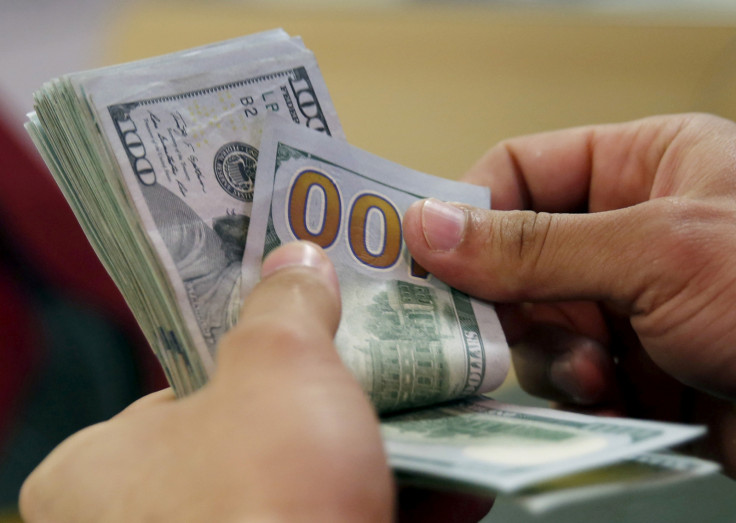Is there really a market for Open Banking?
Open Banking or PSD2 will enable third parties outside the traditional banking world to access customer data

Since the first bank opened its doors in Siena, Italy, in 1472, banks have held onto something that is now being touted as more important than money – data. Unfortunately, however, it's taken the best part of five-and-a-half centuries to fully understand what impact this data could have on the industry, and more importantly its customers.
Fast forward to today, the game changer that the industry needs to kick start the innovation era is here. Open Banking or PSD2 will enable third parties outside the traditional banking world to access customer data, with their permission, and stoke the fires of innovation in a market that is not renowned for it. In fact, whilst it might have been a long time in the making, Open Banking is set to have a hugely positive impact on the UK economy, with the Centre for Economics and Business Research (Cebr) estimating that it could provide a much needed £1bn boost, and 17,000 new jobs.
Could there be any pitfalls?
The success of Open Banking hinges purely on customers allowing third parties access to their financial data, but this is far from a foregone conclusion. Seven in ten (69%) consumers may refuse to share their data, according to new research from Indeed and Accenture. What's more, in light of a drumbeat of high-profile data breaches across the world, and a greater attack surface through opening up banking APIs, there is a natural concern from consumers about who has access to their information. So, it's clear to see that the industry has a job to do to educate them on the security protocols it has in place to protect their data.
Fortunately, however, consumers should be relieved to know that PSD2 is helping strengthen system security through the addition of requirements for strong customer authentication and secure communication, as well as increased supervision of payment institutions. It will also boost transparency by prohibiting the use of non-transparent pricing methods for international payments, making it clearer about the costs involved for consumers. Plus, Open Banking will enable new payment services, with the aim of offering multiple methods for consumers to use – depending on the scenario they require it for, be it payment of a bill, sending money to a loved one abroad or buying a gift.
Let's be clear as well, adoption won't occur unless consumers have trust in the system, so the financial industry needs to marry innovation with awareness for things to take off.
What can consumers expect to see?
Innovation is only limited by your imagination, and by having access to endless financial data, consumers should expect great things from Open Banking. What's more, it won't just be traditional fintech companies that look for opportunities from the data, anyone from retail and mobile operators, to technology and fashion will be looking to help consumers have more choice.
And it's this choice, with no real requirements from consumers (other than allowing the sharing of their data), that underpins Open Banking. Imagine a world where instead of having to figure out if you are on the best gas and electric tariffs, or input endless details to see if you can get a better car insurance quote, that this is being automatically, and constantly calculated in the background. Offering you better prices, deals and perhaps even making decisions for you to ensure that you are better off.
Take, First Direct for example. It has partnered with Bud, a fintech platform linking financial services together, to provide customers with an integrated offering of financial services products and tools from across the market. This includes those from other providers where most appropriate. Even Giffgaff, the mobile virtual network operator (MVNO), is getting in on Open Banking and recently set out its plans to embrace it with a new free-to-use personal financial management service. The MVNO says it will plug into banking data, to help customers cut down on daily expenses and save them money. And, whilst it's only early days, it's great to see that PSD2 is already sparking the interest of those outside of the sector.
Open Banking, Open Collaboration
What's particularly interesting about PSD2 is that whilst it will inject more competition into the financial market, it also brings partnership opportunities. In fact, for traditional banks, collaborating with data hungry and enthusiastic companies, start-up or not, could help build consumer trust by giving them access to more tailored services than ever before, while ensuring everything is secure. Additionally, by collaborating to offer more services – potentially white labeled – to their customers, banks could grow customer loyalty and position themselves as the bank of choice.
How banks react and which road they choose to go down – innovate, partner or risk losing out altogether – is still up in the air, but with two-thirds (66%) of organisations believing the new directive will open up new revenue streams for their organisations the future looks bright. For consumers, it can only be a win-win situation – either banks improve their innovation, which improves their service or they can go to the new players on the block that will. It's time for all involved to step up and deliver as consumers are now in the driving seat. One thing is for sure, the banking industry will never be the same, and I for sure can't wait to see what's round the corner.
Sudhesh Giriyan is Chief Operating Officer, Xpress Money, which explores how technology is helping remove the barriers to financial inclusion.
© Copyright IBTimes 2025. All rights reserved.





















